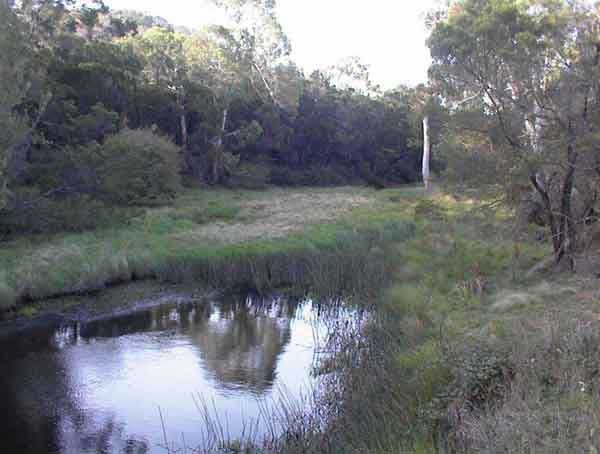Riparian Zone
The riparian zone is the vegetated corridor along streams and rivers. It serves a number of important functions that bear consideration in terms of farm management. The riparian zone:
- acts as a trap for sediments and nutrients heading from hill-slopes to streams, improving stream water quality;
- shades streams, lowering water temperature and altering food sources by preventing the growth of algae. This special environment is home to specifically adapted animals, which are lost following vegetation clearance;
- protects stream banks from collapse and trampling by stock, thus reducing streambank erosion and allowing for a diversity of bank habitats to form, e.g. bank overhangs favoured by the platypus;
- provides a source of litter and snags to channels, which form critical habitat to stream animals, e.g. Murray cod;
- provides food for terrestrial animals, especially in arid areas, and aquatic animals, particularly in small streams;
- provides habitat for birds, mammals and reptiles that live along the river; and
- hosts a number of interesting plants that have intrinsic value.

Photo 1. Riparian vegetation along Jacqua Creek in Windellama, NSW. (photo courtesy of Upper Shoalhaven Landcare Council)
For more information about the functions and management of the riparian zone, see the Riparian Land Management Technical Guidelines published by the Land and Water Resources Research and Development Corporation, now Land and Water Australia (LWA) in 1999. This comes in two volumes, one on the principals of riparian zone management and relevant legislation, and the second on management tools and techniques. To order a copy, visit the Land and Water Australia website. The rivers through forests parameter is the proposed indicator for riparian zone condition.
Author
Ralph Ogden, CSIRO Land and Water
« Back to Glossary Index

